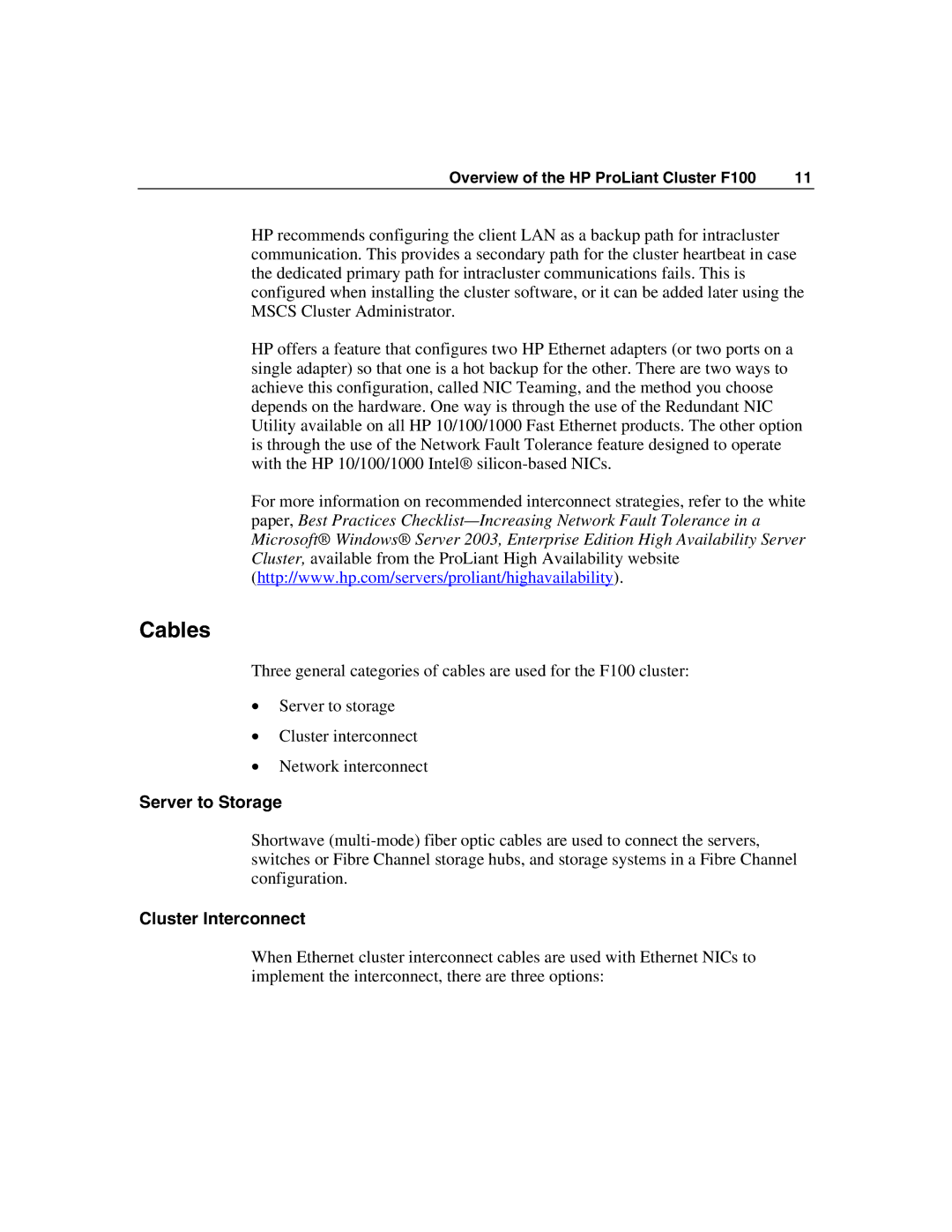Overview of the HP ProLiant Cluster F100 | 11 |
HP recommends configuring the client LAN as a backup path for intracluster communication. This provides a secondary path for the cluster heartbeat in case the dedicated primary path for intracluster communications fails. This is configured when installing the cluster software, or it can be added later using the MSCS Cluster Administrator.
HP offers a feature that configures two HP Ethernet adapters (or two ports on a single adapter) so that one is a hot backup for the other. There are two ways to achieve this configuration, called NIC Teaming, and the method you choose depends on the hardware. One way is through the use of the Redundant NIC Utility available on all HP 10/100/1000 Fast Ethernet products. The other option is through the use of the Network Fault Tolerance feature designed to operate with the HP 10/100/1000 Intel®
For more information on recommended interconnect strategies, refer to the white paper, Best Practices
Cables
Three general categories of cables are used for the F100 cluster:
•Server to storage
•Cluster interconnect
•Network interconnect
Server to Storage
Shortwave
Cluster Interconnect
When Ethernet cluster interconnect cables are used with Ethernet NICs to implement the interconnect, there are three options:
